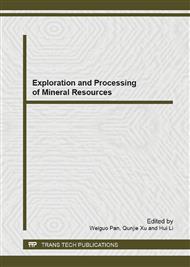p.7
p.11
p.15
p.20
p.26
p.30
p.34
p.38
p.42
Formation Mechanism of Fractures in Tight Sandstone Reservoirs of the Second Member of Xujiahe Formation in the North of Western Sichuan Foreland Basin
Abstract:
Fractures control the distribution of tight sandstone gas reservoirs in the Second Member of Xujiahe Formation in the north of western Sichuan foreland basin. According to the data of filed outcrops, cores, image logs, slice and experimental analysis, we analyzed the genetic types, development characteristics, formation periods and forming mechanism of the fractures in the study area. Tectonic fracture and diagenesis fracture are the two types of fracture in the Second Member of Xujiahe tight sandstones. Between the two types, tectonic fracture is the main. They are mostly shear fractures with three sets of NEE-SWW, NNE-SSW and NW-SE orientations. Structural shear fractures mostly developed under the tectonism of the end of Indosinian, Yanshan and Himalaya stage. The force that formed tectonic fractures came from compression of Longmen Mountain and Micang-Daba Mountain, overpressure formed from deep buried and stress caused by uplift.
Info:
Periodical:
Pages:
26-29
Citation:
Online since:
December 2013
Authors:
Price:
Сopyright:
© 2014 Trans Tech Publications Ltd. All Rights Reserved
Share:
Citation:


